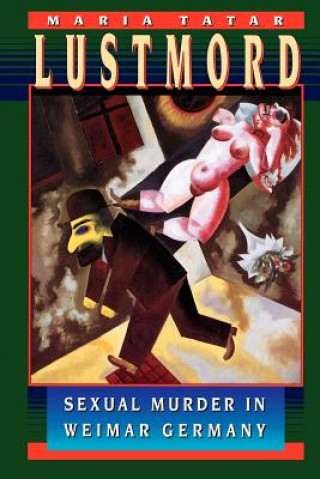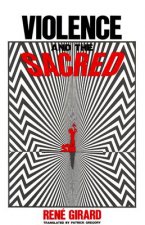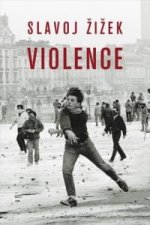
Kód: 07383325
Lustmord
Autor Maria Tatar
In a book that confronts our society's obsession with sexual violence, Maria Tatar seeks the meaning behind one of the most disturbing images of twentieth-century Western culture: the violated female corpse. This image is so preva ... celý popis
- Jazyk:
 Angličtina
Angličtina - Väzba: Brožovaná
- Počet strán: 213
Nakladateľ: Princeton University Press, 1997
- Viac informácií o knihe

60.28 €

Skladom u dodávateľa v malom množstve
Odosielame za 12 - 17 dní
Potrebujete viac kusov?Ak máte záujem o viac kusov, preverte, prosím, najprv dostupnosť titulu na našej zákazníckej podpore.
Pridať medzi želanie
Mohlo by sa vám tiež páčiť
-

Social Capital
101.09 € -

Love Above All and Other Drawings
11.78 € -4 % -

George Grosz
48.49 € -

Survival Guide to the Misinformation Age
29.93 € -4 %
Darčekový poukaz: Radosť zaručená
- Darujte poukaz v ľubovoľnej hodnote, a my sa postaráme o zvyšok.
- Poukaz sa vzťahuje na všetky produkty v našej ponuke.
- Elektronický poukaz si vytlačíte z e-mailu a môžete ho ihneď darovať.
- Platnosť poukazu je 12 mesiacov od dátumu vystavenia.
Viac informácií o knihe Lustmord
Nákupom získate 149 bodov
 Anotácia knihy
Anotácia knihy
In a book that confronts our society's obsession with sexual violence, Maria Tatar seeks the meaning behind one of the most disturbing images of twentieth-century Western culture: the violated female corpse. This image is so prevalent in painting, literature, film, and, most recently, in mass media, that we rarely question what is at stake in its representation. Tatar, however, challenges us to consider what is taking place--both artistically and socially--in the construction and circulation of scenes depicting sexual murder. In examining images of sexual murder (Lustmord), she produces a riveting study of how art and murder have intersected in the sexual politics of culture from Weimar Germany to the present. Tatar focuses attention on the politically turbulent Weimar Republic, often viewed as the birthplace of a transgressive avant-garde modernism, where representations of female sexual mutilation abound. Here a revealing episode in the gender politics of cultural production unfolds as male artists and writers, working in a society consumed by fear of outside threats, envision women as enemies that can be contained and mastered through transcendent artistic expression. Not only does Tatar show that male artists openly identified with real-life sexual murderers--George Grosz posed as Jack the Ripper in a photograph where his model and future wife was the target of his knife--but she also reveals the ways in which victims were disavowed and erased. Tatar first analyzes actual cases of sexual murder that aroused wide public interest in Weimar Germany. She then considers how the representation of murdered women in visual and literary works functions as a strategy for managing social and sexual anxieties, and shows how violence against women can be linked to the war trauma, to urban pathologies, and to the politics of cultural production and biological reproduction. In exploring the complex relationship between victim and agent in cases of sexual murder, Tatar explains how the roles came to be destabilized and reversed, turning the perpetrator of criminal deeds into a defenseless victim of seductive evil. Throughout the West today, the creation of similar ideological constructions still occurs in societies that have only recently begun to validate the voices of its victims. Maria Tatar's book opens up an important discussion for readers seeking to understand the forces behind sexual violence and its portrayal in the cultural media throughout this century.
 Parametre knihy
Parametre knihy
Zaradenie knihy Knihy po anglicky Society & social sciences Society & culture: general Social issues & processes
60.28 €
- Celý názov: Lustmord
- Autor: Maria Tatar
- Jazyk:
 Angličtina
Angličtina - Väzba: Brožovaná
- Počet strán: 213
- EAN: 9780691015903
- ISBN: 9780691015903
- ID: 07383325
- Nakladateľ: Princeton University Press
- Hmotnosť: 356 g
- Rozmery: 227 × 126 × 15 mm
- Dátum vydania: 05. May 1997
Obľúbené z iného súdka
-

The Second Sex
7.27 € -24 % -

White Tears Brown Scars
10.24 € -24 % -

When Helping Hurts
13.63 € -22 % -

The Beauty Myth
6.14 € -24 % -

Violence and the Sacred
35.98 € -

Wolf Nation
33.21 € -13 % -

Good Immigrant
13.93 € -12 % -

Stuart
13.52 € -15 % -

Population Wars
16.40 € -19 % -

The Lucifer Effect
15.88 € -22 % -

Superforecasting
10.96 € -24 % -

Sensate Focus in Sex Therapy
41.31 € -

Pleasure Activism
17.22 € -19 % -

Drama Of Being A Child
11.17 € -23 % -

Alcoholics Anonymous Big Book
25.11 € -

Vulture
17.52 € -13 % -

Regarding the Pain of Others
12.29 € -23 % -

Rational Optimist
16.60 € -22 % -

Poor Economics
11.06 € -23 % -

Violence
13.11 € -9 % -

Psychopath Free
20.29 € -5 % -

Shock Doctrine
14.86 € -23 % -

The Divide
11.99 € -17 % -

Silently Seduced
12.91 € -24 % -

The Feminine Mystique
10.04 € -23 % -

Toxic Parents
14.45 € -23 % -

Soft Power
14.86 € -18 % -

Third Wave
8.60 € -22 % -

Posthuman Feminism
21.11 € -

No Logo
13.11 € -9 % -

Courage To Heal Workbook
23.37 € -17 % -

Illness as Metaphor and AIDS and Its Metaphors
14.45 € -23 % -

Down and Out in Paris and London
10.14 € -23 % -

Dopesick
10.24 € -24 % -

Presence
15.06 € -22 % -

Facing the Shadow
33.31 € -19 % -

Last Days at Hot Slit - The Radical Feminism of Andrea Dworkin
19.06 € -22 % -

A Room of One's Own
7.99 € -24 % -

Future Shock
9.01 € -18 % -

Problem that Has No Name
2.55 € -23 % -

Your Silence Will Not Protect You
15.57 € -23 % -

Social Animal
12.81 € -24 % -

Attention Merchants
12.19 € -18 % -

Who Cooked Adam Smith's Dinner?
12.29 € -23 % -

Stiff Upper Lip
12.29 € -23 % -

Power Elite
16.60 € -23 % -

Eternal Treblinka
22.85 € -

Critical Race Theory (Third Edition)
20.39 € -6 % -

Go Ask Alice
10.14 € -23 %
Osobný odber Bratislava a 2642 dalších
Copyright ©2008-24 najlacnejsie-knihy.sk Všetky práva vyhradenéSúkromieCookies


 21 miliónov titulov
21 miliónov titulov Vrátenie do mesiaca
Vrátenie do mesiaca 02/210 210 99 (8-15.30h)
02/210 210 99 (8-15.30h)